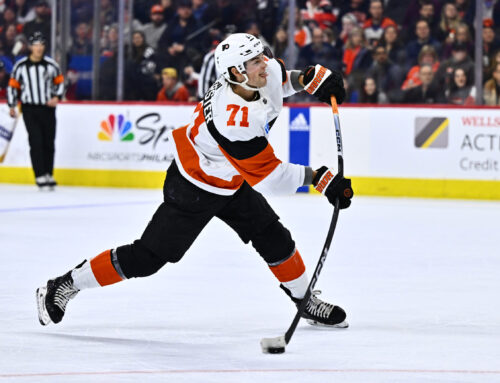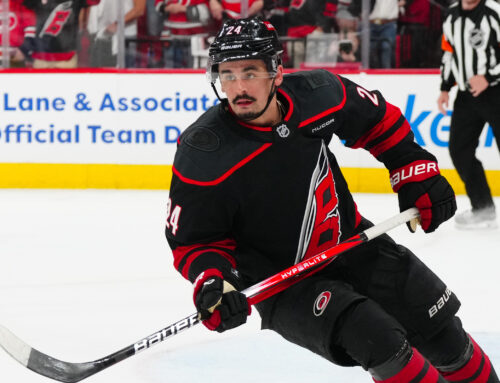
I’m really excited about the following analysis and I hope you are too. Like always please follow me on twitter @DH_jcameronmetz. The data source for this analysis comes from Natural Stat Trick.
For the last three years I’ve routinely drafted Oliver Ekman-Larsson. My rankings are typically created by normalizing the data using a standard score (Z-score) on each position group. OEL for a few reasons always shows up with great value based on his ADP. One of those reasons is his shot volume – which again I’m a sucker for. The other reason is that he had a great PIM season in 2015-2016 with 98 PIMs compared to an average around 50. Needless to say I missed this glaring stat that was due to fall back to earth and I drafted OEL probably a couple rounds too early in 2016-17. I drafted Dustin Byfugelin that year as well and had what seemed to be formidable PIM production from the blue line (Kris Letang was on my team as well). Here’s the thing – even with leading the league in PIMs my record in Head-to-Head wasn’t screaming unbeatable, instead I sat slightly above .500 in the W column for the PIM stat.
So I’ve begun to realize some of my own short comings, namely looking at penalty minute totals as whole rather than how they were produced. While I’m sure most of us agree it is becoming an antiquated category, it is unfortunately what we are stuck with in most leagues. After reading this piece I’d challenge you to think about each of the stat categories in your leagues and think if you’re actually ranking something that come fantasy playoffs is more likely to be sustainable or fleeting.
I love a pest as much as the next – see Kris Letang. There is nothing better than watching Kristopher Letang (Thanks Pierre!) absolutely lose it and then go insane on a referee for what was an obvious cross checking call. Brad Marchand licking an opponent? Sure why not add it to my totals (weird though right)? The theatrics on how these PIM totals are created add to the fun of fantasy. It’s fun getting up to go to work and checking the previous night stat lines that you thought were set in stone, only to see that one of your guys decided to go nuts with 45 seconds left and get a game misconduct – all but guaranteeing you a W for the week. As fun as it is gaining PIMs quickly, you know what isn’t fun? Losing in round 2 of the fantasy playoffs because five of your biggest PIM producers decided they wanted to save their fighting hands for the playoff run or that they didn’t get booted from the game.
For this reason I’ve decided to introduce a sustainable PIM ranking to my players – if I get beat in a playoff week because another guy’s player decides to take a misconduct, that’s a probabilistic risk I’m willing to assume. I’d rather mosey on up to the 20ish PIM total for the week and reasonably expect to be competitive.
How am I going to do that? Strip out the noise and create a variable called PIMsustainable:
- Create variable PIMsustainable
- Create PIMmisconduct for misconducts taken for each player
- Create PIMmajor for major penalties taken for each player
- Remove majors and misconducts from players PIM total
- PIMsustainable = PIMtotal – (PIMmisconduct + PIMmajor)
The below graph shows the top players for PIM sustainable on each team; the X-axis is the derived variable PIMsustainable and the Y-axis is the total PIMs for that year. Any player above the straight red line indicates players with inflated penalty minutes from non-minor penalties.

I threw in a table just to show numbers rather than just a graph. These players all scored at an average total point pace of 40 points on the year.
|
Player |
Pim_Sustainable |
PIM |
Pim_Difference |
|
Evgeni.Malkin |
72 |
87 |
15 |
|
Patric.Hornqvist |
48 |
58 |
10 |
|
Vladislav.Namestnikov |
40 |
45 |
5 |
|
Patrick.Maroon |
38 |
73 |
35 |
|
Sidney.Crosby |
36 |
46 |
10 |
|
Justin.Williams |
36 |
56 |
20 |
|
Travis.Konecny |
36 |
46 |
10 |
|
Pierre-Luc.Dubois |
34 |
49 |
15 |
|
Chris.Kreider |
34 |
44 |
10 |
|
Wayne.Simmonds |
32 |
57 |
25 |
|
Phil.Kessel |
26 |
36 |
10 |
|
Sean.Couturier |
26 |
31 |
5 |
|
Shayne.Gostisbehere |
20 |
25 |
5 |
|
Jordan.Eberle |
16 |
21 |
5 |
|
Josh.Bailey |
12 |
17 |
5 |
|
Pavel.Buchnevich |
10
📢 advertisement:
|
20 |
10 |
Here is how the Atlantic shakes out:

|
Player |
PIM_Sustainable |
PIM |
Pim_Difference |
|
Dylan.Larkin |
56 |
61 |
5 |
|
Brad.Marchand |
48 |
63 |
15 |
|
Charlie.McAvoy |
48 |
53 |
5 |
|
Steven.Stamkos |
42 |
72 |
30 |
|
Yanni.Gourde |
40 |
50 |
10 |
|
Vladislav.Namestnikov |
40 |
45 |
5 |
|
Alex.Killorn |
40 |
45 |
5 |
|
Nick.Bjugstad |
36 |
41 |
5 |
|
David.Pastrnak |
32 |
37 |
5 |
|
Nazem.Kadri |
32 |
42 |
10 |
|
Keith.Yandle |
30 |
35 |
5 |
|
Ryan.Dzingel |
30 |
35 |
5 |
|
Rasmus.Ristolainen |
28 |
48 |
20 |
|
Anthony.Mantha |
22 |
52 |
30 |
|
Jake.DeBrusk |
4 |
19 |
15 |
I think the biggest take away from all of this – and maybe you didn’t need to see all of the data and graphs to come to this conclusion but when we make our rankings – it’s probably best to not inflate Patrick Maroon’s value in your league for 30 random penalty minutes. Granted you’re going to get those minutes at some point or another, it just matters if it’s though the first three weeks of the last three weeks of the season.
Steven Stamkos had a heck of a year, but if you’re using last year’s stats as a guide for next year’s total player ranking you probably will not see similar PIM totals next year. I would imagine the same could be said for Anthony Mantha / Rasmus Ristolainen well.
Someone like Evgeni Malkin is going to have some difference in his sustainable number but he still is a big enough hot head that he can be of service in this category on top of his points. I know that this year when I develop my rankings, I’m stripping out the noise so I can focus on the scoring categories without placing the fate of my team on the whim of a hot head.
Let me know your thoughts and reply if there are any other categories this type of analysis could be applied towards.
One Comment
Leave A Comment
You must be logged in to post a comment.





 FLA
FLA CHI
CHI NYR
NYR PIT
PIT L.A
L.A COL
COL CBJ
CBJ ANA
ANA WPG
WPG TOR
TOR MTL
MTL SEA
SEA S.J
S.J BOS
BOS VAN
VAN NSH
NSH

Does this perhaps suggest that smoothing the effect of PIMs by merging it into a combined stat would be a good idea? For example, in my long-time roto league this year, we used a “Grit” stat = Hits + Blocks + Fights, not wanting to lend too much weight to any of the individual stats. If you did that, you would probably want to know if there is extraordinary variation in the other stats as well.